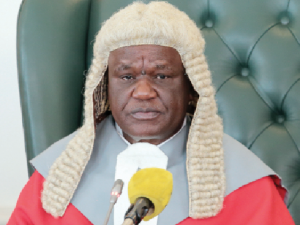1. Introduction
On 27 March 2020, President Mnangagwa declared a 21-day national lockdown which ended on 19 April 2020. The lockdown was extended for another 14 days to 3 May 2020. The extension of the lockdown was followed by the gazetting of Statutory Instrument (SI) 2020-094 Public Health (COVID-19 Prevention, Containment and Treatment) (National Lockdown) (Amendment) Order, 2020 on 21 April 2020. The SI in large part replicated the original lockdown Instrument. Of note is that the new instrument designated journalists, newspaper vendors, internet service providers and broadcast services as essential services.On days 22 and 23 of the lockdown, official statistics by the Ministry of Health and Child Care indicated that COVID-19 confirmed cases had increased to twenty-eight (28), whilst the number of deaths relating to COVID-19 remained at three (3). The Ministry of Health and Child Care decentralised COVID-19 testing to provincial and district level, leading to an increase in daily tests of suspected cases. Thus as of 21 April, cumulative tests of suspected COVID-19 cases had increased to four thousand one hundred and forty-nine (4 149), of which four thousand one hundred and twenty-one (4 121) were negative.
2. Methodology
This report encompasses reports covering the 10 provinces of the country through reports received from the following Forum Members:
- Zimbabwe Peace Project (ZPP)
- Media Institute of Southern Africa (MISA)
- Zimbabwe Lawyers for Human Rights (ZLHR)
- Counselling Services Unit (CSU)
- Zimbabwe Association of Doctors for Human Rights, (ZADHR)
- Zimbabwe Human Rights Association (ZimRights)
3. General Atmosphere Part of the consignment of personal protective equipment and ventilators imported by Sakunda Holdings and Chinese business-people operating in Zimbabwe for use in the COVID-19 response arrived at Robert Mugabe International Airport on 20 April 2020. Sakunda Holdings recently partnered with the government to contribute to COVID-19 response initiatives in the country. It was reported that the consignment will be handed over to the Ministry of Health and Child Care for distribution.The Secretary in the Ministry of Information, Publicity and Broadcasting, Mr Nick Mangwana, reported through a Twitter post that an estimated 65 Zimbabweans who returned from the United Kingdom aboard an Ethiopian Airlines refused to be quarantined at Belvedere Teacher’s College, demanding that they be booked into a hotel. It was reported that the returnees complained about water, sanitation and social distancing as they were required to share bathrooms. Zimbabwe is receiving several returnees from various countries, including COVID-19 hotspot, and management of such returnees does not seem to be flowing smoothly.In Mutare, the Mutare City Council shut down Sakubva farmers market due to the increase in human traffic and the continuous defiance of social distance. The Council has since decentralized farmers markets to Dangamvura, Chikanga and Hobhouse.
In Harare, long queues of vehicles coming into the Harare CBD were witnessed at Mabvuku turnoff police roadblock. It was reported that some of the motorists who did not have required documentation turned off the road and used auxiliary roads to avoid the roadblock. Of concern was the large number of people who are defying the lockdown by going into town without required documentation.
In Glenorah, Harare City Council officers instructed vendors to remove vending stalls and temporary shelter. It was reported that Council officials were destroying the shelters in the absence of the owners, and owners were also not allowed to take remaining building materials from the destroyed vending stalls and temporary shelter. This is part of a “clean-up” crusade the City of Harare has been engaged in, which started in Mbare and in Machisipa from Independence Day on 18 April. On 21 April, however, Harare Mayor Obert Gomba issued a statement indicated that he had engaged with the Town Clerk to stop the demolitions until a comprehensive policy has been devised to approach the issue.
In Kuwadzana, it was reported that people were going about their normal business defying the lockdown and social distance. Scores of people besieged the streets whilst children were playing and running around in the streets. In Glen View, anti-riot police were reported to have confiscated 20 crates of alcohol at Mude business centre in Glenview 7. It is alleged that the beer hole was selling alcohol through the back door.
In Chinhoyi, vendors were selling their products on their usual sites. However, most of them were not exercising social distance or sanitizing their hands. It was also reported that police have started night patrols due to the increase in illicit bars.
In Chipinge, scores of people were seen moving around in Chipinge CBD. There were roadblocks on all the roads leading to Chipinge town manned by ZRP officers and soldiers. There were also long queues at N Richards supermarket and OK supermarket of people who were waiting for their turn to buy mealie meal.
4. Arrests
In Chitungwiza on 18 April 2020, police officers arrested Lovemore Zvekusekwa for allegedly circulating false information during the COVID-19 national lockdown. Zvekusukwa appeared in court on 20 April 2020 on charges of contravening section 31(a)(i) of the Criminal Law (Codification and Reform) Act [Chapter 9:23]. It is alleged that Zvekusekwa developed and forwarded a fake press statement which indicated that the President was extending the lockdown by 13 days from 20 April to 3 May. Zvekusekwa was denied bail when he appeared in court, and is due to appear in court on 13 May. This is the first arrest relating to the circulation of “false news” relating to COVID-19. The arrest comes after the President indicated that he had instructed members of the Central Intelligence Organisation (CIO) to track down and arrest individuals circulating fake news relating to COVID-19.
In Nkayi, it was reported that police officers arrested seven (7) people for defying the lockdown and for public drinking. It was reported that the arrested persons were buying alcohol through the backdoor at Vimbana bottle store when police officers arrested them. They were taken to Nkayi police station where they were fined ZWL200 before being released.
5. Assaults
In Highfields, Harare, it was reported that three (3) ZANU-PF youths were assaulted by police officers with baton sticks near OK supermarket Machipisa. It was indicated that the trio tried to stop police officers from destroying their vending structures indicating their affiliation to ZANU-PF. The police would, however, have none of it and assaulted the trio notwithstanding the existence of the recent high court order barring police from assaulting people.
It was reported that police officers assaulted six (6) people at Mkoba 6 shopping centre with baton sticks. It is alleged that community members were queued at Choppies supermarket for groceries when police officers descended on the people and started assaulting them indicating that they were not observing social distance.
6. Summary of Violations
The table below summarises human rights violations documented by the Forum Secretariat and Forum Members from 30 March 2020 to 21 April 2020.
| Nature of Violation |
Number of Victims |
Location |
| Assault |
181 |
Harare, Zvishavane, Masvingo, Bulawayo, Wedza, Chinhoyi, Zaka, Gweru, Chitungwiza, Bindura, Nembudziya, Chiredzi, Marondera, Mutoko, Chivi, Bikita, Zvishavane |
| Attack on Journalists |
12 |
Mutare, Gweru, Chinhoyi, Harare, Chiredzi, Masvingo |
| Arrests |
207 |
Masvingo, Gokwe, Gweru, Bulawayo, Chinhoyi, Hwange, Harare, Magunje, Lupane, Norton, Bikita, Mutasa, Chitungwiza, Nkayi |
| Malicious Damage to Property |
1 |
Harare |
7. Litigation Monitoring
Harare High Court judge Justice Joseph Mafusire ordered the Zimbabwe Broadcasting Corporation (ZBC) to ensure that there is a sign language interpreter on all news broadcasts. He also ordered the Ministry of Health and Childcare to ensure that its daily update on the COVID-19 situation is also sent as a voice recording to enable the blind to also access information. He ordered this in a matter which had been brought to court by the Centre for Disability and Development, Deaf Zimbabwe Trust and Zimbabwe National League of The Blind against ZBC; the Minister of Information, Publicity and Broadcasting Services; the Minister of Health and Child Care and the Minister of Public Service, Labour and Social Welfare.
In a separate application brought to the High Court by the Media Insitute of Southern Africa (MISA) Zimbabwe chapter, Justice Musakwa ordered the Ministry of Health and Child Care to publish and disseminate information on the testing and treatment centres at national, provincial and district hospitals allocated for dealing with COVID-19 cases.
The High Court also ordered police to recognize 2019 press cards and not to interfere with the work of journalists on the basis that their press cards were issued in 2019. The order was granted by Justice Jacob Manzunzu who also ordered the Commissioner of Police to ensure that the Zimbabwe Media Commission’s statement about the validity of the 2019 press cards is communicated to all police stations in Zimbabwe within 3 days of the order. The matter had also been filed by the Media Institute of Southern Africa (MISA) Zimbabwe.
In addition reports of assaults and excessive use of force by the police, continue to be received in different parts of the country. These action are a potentially a wilful contempt of the court which has barred the police and the army from assaulting citizens in implementing the lockdown.
8. Conclusion
As Zimbabwe is now in extended lockdown, it is imperative that a human-rights based approach be taken, in order to reap the dividends of the lockdown. This includes stepping up measures to ensure provision of basic needs for people, improving case management systems, and adequately equipping personnel and facilities handling COVID-19 related cases. Although the government has been ordered to provide personal protective clothing to health workers and frontline responders, there has been no positive feedback from health workers countrywide that government has started supplying the equipment. The Forum urges the government to comply with court orders that have been issued by the courts so far to ensure that rights are protected in the response measures. Meanwhile, the Forum continues to implore upon everyone in Zimbabwe to cooperate with authorities and observe guidelines and best-practices as provided by the World Health Organisation.
Post published in: Featured
 Kathryn Rubino is a Senior Editor at Above the Law, and host of The Jabot podcast. AtL tipsters are the best, so please connect with her. Feel free to email her with any tips, questions, or comments and follow her on Twitter (@Kathryn1).
Kathryn Rubino is a Senior Editor at Above the Law, and host of The Jabot podcast. AtL tipsters are the best, so please connect with her. Feel free to email her with any tips, questions, or comments and follow her on Twitter (@Kathryn1).






 Jordan Rothman is a partner of
Jordan Rothman is a partner of 




